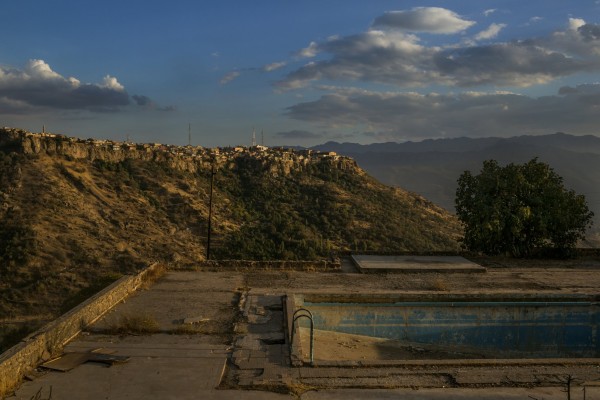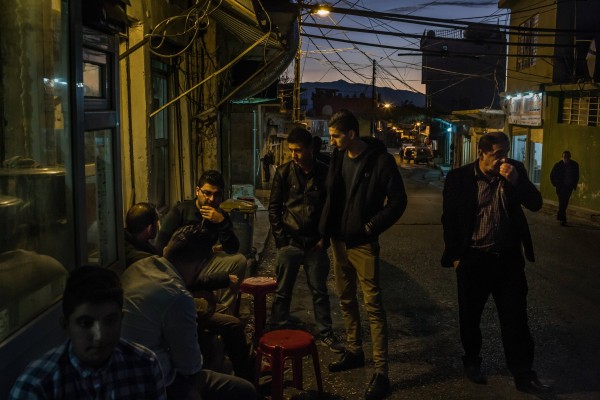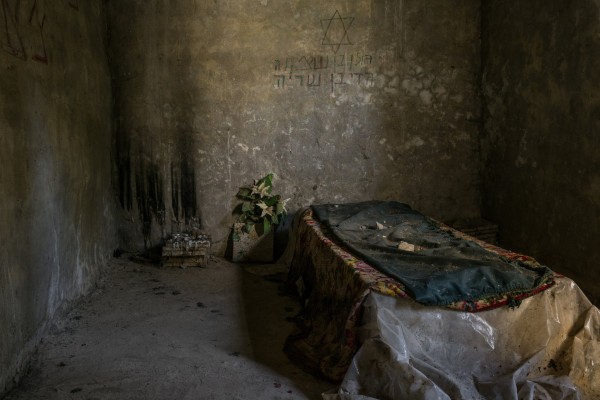
The town of Amadiya atop a mesa, viewed from an abandoned hotel, in the Kurdish region of northern Iraq. Mauricio Lima for The New York Times
ishtartv.com - nytimes.com
By
ROD NORDLANDNOV. 7, 2017
AMADIYA,
Iraq — This once-pretty picture postcard town, on its own 4,000-foot high mesa
nestling between a pair of much higher mountain ranges, is in a bad
neighborhood when it comes to tolerance.
So
the mystery of the Jewish holy figure Hazana, who is revered here by people of
all the local faiths, is even more profound than it might otherwise be.
Amadiya
is in the semiautonomous province of Kurdistan, which is the target of a
crackdown by Baghdad after aiming to achieve independence from Iraq. This part
of northern Iraq has been convulsed by violence since the advance of the
Islamic State, which sent Christians fleeing, enslaved Yazidi women and killed
Shiites on sight, until finally being wiped out in the area last month.
Today
Amadiya’s population of 9,000 is overwhelmingly Kurdish Muslim. But in the early
20th century there were said to be about two-thirds that many people, about
evenly divided among Muslims, Christians and Jews — although there were 10
mosques compared with two churches and two synagogues. Everyone was packed into
a circumference of a mile and a half.
Amadiya’s
Jews all left after the creation of Israel in 1948. And so many Christians have
left amid successive regional upheavals that the remaining 20 or 30 families
can no longer sustain both churches.
All
three faiths here are brought together by a longstanding reverence for Hazana,
a Jewish religious figure of unknown antiquity — variously described as a son
of David, the grandson of Joseph or just a little-known prophet — whose tomb is
in Amadiya.
“All
the religions are going to that grave to pray,” said Muhammad Abdullah, a local
teacher and amateur historian. “For all three religions, it’s a sacred place.
Each of them thinks he belongs to them.”
Hazana’s
biography is so hazy that he defeats a Google search. Locals don’t have much to
add. He was “a really great guy, a pure person,” said Bzhar Ahmad, 55, a
retired government worker who had just emerged from noon prayers at the town’s
Amadi Grand Mosque, with a group of other Muslim worshipers nodding agreement.
None
of the men found it strange that Muslims and Christians also prayed at Hazana’s
tomb. “The Jews were always our friends,” Mr. Ahmad said. “We never thought
about what we were, we were just people living together.”
Directions
given by locals to find Hazana’s tomb varied, but all ended up in a crooked
lane narrow enough that in Amadiya’s heyday there were footbridges connecting
roofs from one side to the other so that residents could use their rooftops to
go to the mosque while avoiding the visitors in the overcrowded lanes below. Or
so they say.
On
the way, opposite a chicken coop with a roof festooned in flowering potted
plants, Saran Sabah stood with her 18-year-old daughter, Amal. In the side
alley leading to her house was a huge pile of firewood, ready for the coming
winter. A Sunni Muslim, Ms. Sabah had prayed to Hazana, and it had worked, she
said; there was a daughter to prove it.
The
men hadn’t mentioned that Hazana’s popularity rested on his ability to bring
fertility to supplicants, but later confirmed it. Borhan Said, a local Muslim
resident and retired government worker, said people asked for other things as
well. “He was a religious man who was so clear and so devout,” he said.
It
almost sounded as if they had met, but it turned out that Mr. Said was not even
sure what epoch Hazana came from. “He was before my father’s father, that’s all
I know,” he said.
Mr.
Said pointed out the nondescript red metal gate of what had been the old
synagogue, unlocked and unguarded, and said visitors were welcome. Inside was a
garden of fig trees and pomegranates, trumpet creepers and hibiscus, unkempt
but well-watered. Purple and blue prayer cloths, used by those who came to ask
Hazana’s help, were hanging on some of the bushes.
Here
and there were piles of rubble, old stone building blocks and sections of walls
— the remains of the synagogue itself. Cut into the earth was a stone staircase
leading to an underground tomb.
On
the plastered walls inside the tomb was some fairly recent graffiti in Hebrew
script, the verses of a religious song, along with an emoji-like smiley face,
plus a Star of David sketched over Hazana’s plain rectangular sarcophagus.
Just
what accounts for the town’s communal tolerance, people say they’re not sure,
except that it has always been so. “We grew up like this,” Mr. Said said. “My
father always taught me to be like this and I teach my son the same.”
Partly
the town benefits from its remoteness; even when Kurds engaged in civil war
from 1994 to 1997, fighting never arrived here, though both warring factions
were present.
Amadiya
| ONCE IN A PLACE | full movie Video by SHOWREEL Mahdi Zahid
Some
attribute it to Amadiya’s history. Take the Amadi Grand Mosque, for example,
the biggest and oldest of the town’s 10 mosques. Speculation runs that it was
originally a temple for the ancient Romans’ Mithraic cult. Then, say locals,
the building became a Jewish synagogue for centuries before becoming a
Christian church for more centuries and finally, after the arrival of Islam 800
years ago, a mosque.
How
much of that is actually true is debatable; Amadiya is such an out-of-the-way
place that it seems not to have been much studied.
It
would be easy to say that part of the secret of Amadiya’s harmony is simply
that most of the other faiths have now left town, though some Jews have visited
recently to help restore Hazana’s tomb and to pray there.
But
locals insist that would be unfair. Nafae Paulis is the caretaker of the
Chaldean church and a veteran of the Kurdish pesh merga Special Forces who is
now retired after years of battling the Islamic State. He talked as if the
other faiths were still around in numbers as before.
“That’s
the beauty of Amadiya,” he said. “In this small place you can find Muslims,
Jews, Christians.”
Even
if not actually true, it is a nice sentiment.

Residents at a cafe in the bazaar area of Amadiya. Mauricio Lima for The New York Times

The tomb of Hazana, who is variously described as a son of David, the grandson of Joseph or just a little-known prophet. Mauricio Lima for The New York Times
|